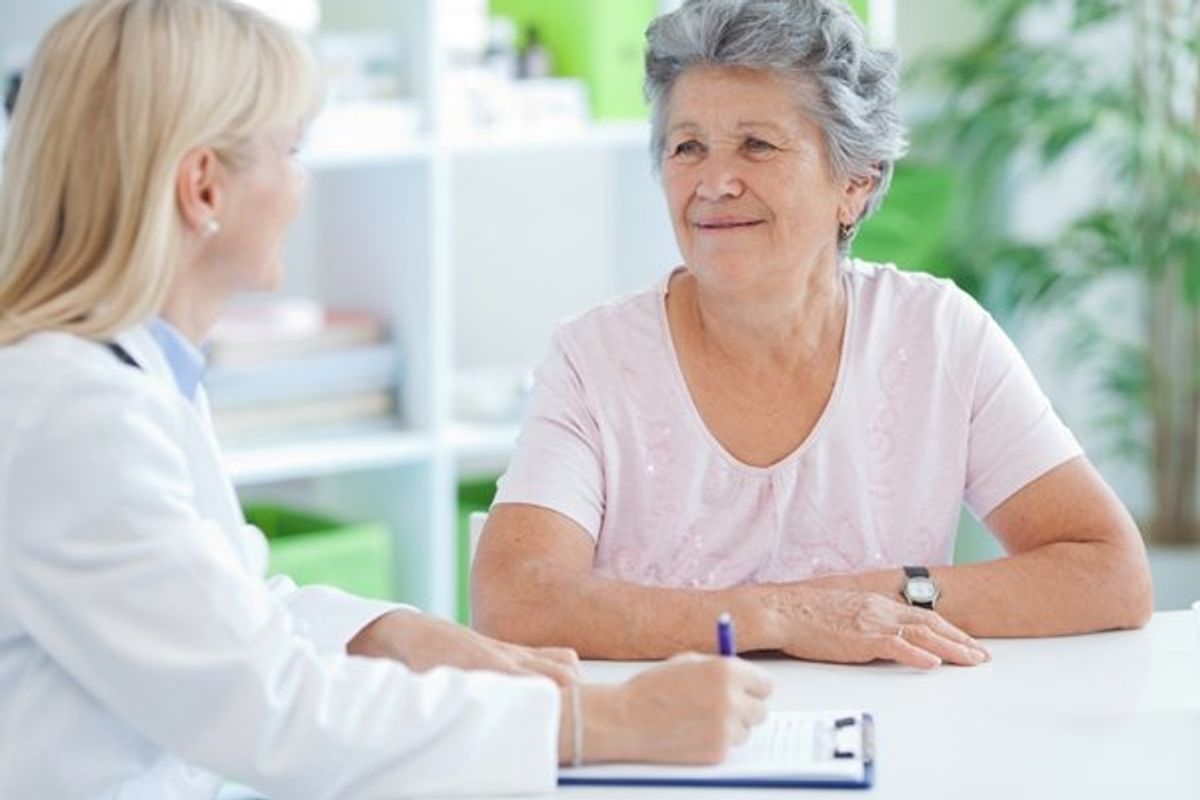This article has been archived. We will no longer be updating it. For our most up-to-date information, please visit our menopause hub here.
by Rebecca Nebel, PhD, Assistant Director, Scientific Programs, Society for Women's Health Research
Recently, the North American Menopause Society and the International Society for the Study of Women's Sexual Health endorsed using the term genitourinary syndrome of menopause (GSM) instead of using the term vulvovaginal atrophy, or VVA. Many believe that the term VVA does not adequately encompass all associated symptoms, and that by using GSM, it will help overcome this issue.1
For this post, we will be using the term GSM and discussing the lower urinary tract symptoms (LUTS) associated with this condition.
Women with GSM often report LUTS including frequency, urgency (sudden urge to urinate), nocturia (frequent urination at night), urge incontinence (involuntary loss of urine because of uncontrollable urgency) and recurrent urinary tract infections (UTIs).2,3
It is important to note that these urological problems can occur in women with or without GSM, although they appear at a higher rate in women with GSM.4,5 For example, one study found that women with GSM were nearly twice as likely to have a urinary tract infection diagnosis as women without GSM.4
Administration of local vaginal estrogen therapy can improve LUTS in postmenopausal women with GSM.6-10 Many studies have compared the efficacy of different local estrogen delivery methods (creams, tablets, rings and pessaries) and found that each method is equally effective in improving LUTS.6,9,10
Local vaginal estrogen has also been shown to improve LUTS like urge incontinence and recurrent UTIs in postmenopausal with or without GSM.11-13 However, as with any treatment, there can be negative side effects as well.10 Interestingly, systemic estrogen (taking estrogen orally, via a skin patch, etc.) does not appear to improve lower urinary tract symptoms in postmenopausal women and may in fact worsen them.11-13
LUTS (with or without GSM) can be painful and can impact quality of life. It is important to report symptoms to a health care provider who can discuss treatment options. Report symptoms as soon as you experience them, and talk to a health care provider if you have any questions or concerns.
The Society for Women's Health Research believes that women should feel empowered to ask questions and educate themselves on changes to their health and bodies across their lifespan, including their hormonal health. To learn more about hormonal health across the lifespan, visit the Society for Women's Health Research website.
References:
1. Portman DJ, Gass ML. Genitourinary syndrome of menopause: new terminology for vulvovaginal atrophy from the International Society for the Study of Women's Sexual Health and The North American Menopause Society. Climacteric. 2014;17(5):557-563.
2. Mac Bride MB, Rhodes DJ, Shuster LT. Vulvovaginal atrophy. In Mayo Clinic Proceedings. 2010. Elsevier.
3. Pandit L, Ouslander LG. Postmenopausal vaginal atrophy and atrophic vaginitis. Am J Med Sci. 1997;314(4):228-231.
4. Constantine GD, et al. Incidence of genitourinary conditions in women with a diagnosis of vulvar/vaginal atrophy. Curr Med Res Opin. 2014;30(1):143-148.
5. Nappi R, Kokot-Kierepa M. Vaginal health: insights, views & attitudes (VIVA)—results from an international survey. Climacteric. 2012;15(1):36-44.
6. Casper F, Petri E, and V.R.S. Group. Local treatment of urogenital atrophy with an estradiol-releasing vaginal ring: a comparative and a placebo-controlled multicenter study. Int Urogynecol J. 1999;10(3):171-176.
7. Eriksen PS, Rasmussen H. Low-dose 17β-estradiol vaginal tablets in the treatment of atrophic vaginitis: a double-blind placebo controlled study. Eur J Obstet Gynaecol Reprod Biol. 1992;44(2):137-144.
8. Foidart JM, Vervliet J, Buytaert P. Efficacy of sustained-release vaginal oestriol in alleviating urogenital and systemic climacteric complaints. Maturitas. 1991;13(2):99-107.
9. Lose G, Englev E. Oestradiol‐releasing vaginal ring versus oestriol vaginal pessaries in the treatment of bothersome lower urinary tract symptoms. BJOG. 2000;107(8):1029-1034.
10. Suckling JA, et al. Local oestrogen for vaginal atrophy in postmenopausal women. The Cochrane Library. 2006.
11. Cody JD, et al. Oestrogen therapy for urinary incontinence in post‐menopausal women. The Cochrane Library. 2012.
12. Perrotta C, Aznar M, Mejia R, Albert X, Ng CW. Oestrogens for preventing recurrent urinary tract infection in postmenopausal women. Cochrane Database Syst Rev. 2008;(2):CD005131. doi: 10.1002/14651858.CD005131.pub2.
13. Smith AL, Wein AJ. Estrogen replacement therapy for the treatment of postmenopausal genitourinary tract dysfunction. Discov Med. 2010;10(55):500-510.
Reviewed by:
Elizabeth R. Mueller, MD, MSME, Professor, Departments of OB/Gynecology and Urology, Loyola University Stritch School of Medicine, and SWHR Urology Network Chair.
Cindy L. Amundsen, MD, Roy T. Parker Professor in Obstetrics and Gynecology, Associate Professor Surgery, Division of Urology, Duke University Medical Center, and SWHR Urology Network member.
Follow Society for Women's Health Research on Twitter: www.twitter.com/SWHR
More:
Women's Health







